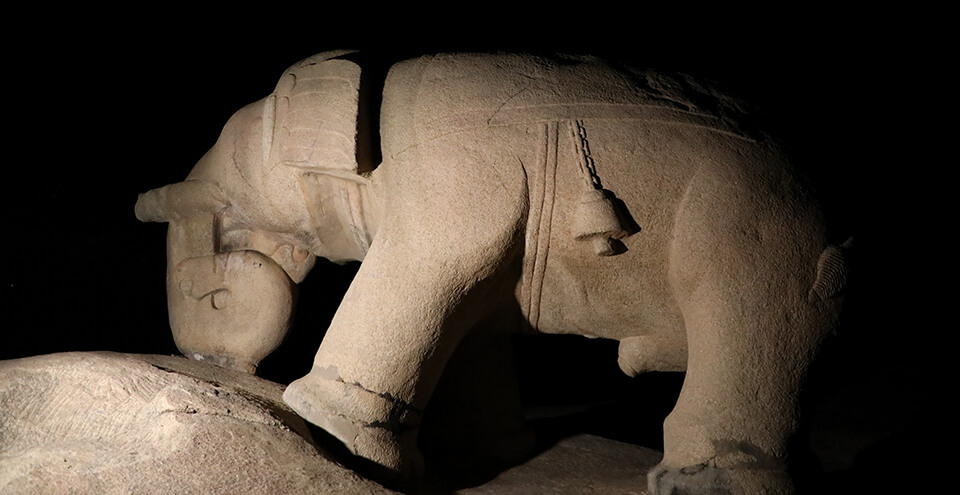
Hathi Bhata: Tonk’s Majestic Elephant Stone
Hathi Bhata, located in Tonk, Rajasthan, is a fascinating historical and archaeological site renowned for its unique stone carving and cultural significance. This ancient monument, also known as the Elephant Stone, is a remarkable example of Rajasthani architecture and artistry, attracting historians, archaeologists, and tourists interested in India’s rich heritage.
Significance
Historical Context: Hathi Bhata is believed to date back to the 12th century, during the reign of the Rajput rulers of the region. The stone carving, depicting an elephant, reflects the artistic and architectural prowess of the time. The site offers insights into the historical and cultural milieu of medieval Rajasthan.
Architectural Importance: The intricately carved elephant sculpture showcases the craftsmanship and artistic skills of the period. It is an important example of the stonework and design techniques used in ancient Rajasthan.
Key Attractions and Highlights
1. The Elephant Carving:
Intricate Design: The centerpiece of Hathi Bhata is the massive stone carving of an elephant. The sculpture is notable for its detailed and realistic depiction of the elephant, including its trunk, tusks, and body. The artistry reflects the high level of skill achieved by the artisans of that era.
Symbolism: Elephants are often symbolic of strength, stability, and royalty in Indian culture. The carving at Hathi Bhata may have held significant symbolic or ceremonial importance.
2. Historical Context:
Cultural Significance: Hathi Bhata provides valuable insights into the art and culture of medieval Rajasthan. The carving is believed to have been created as a part of a larger architectural complex or as a standalone piece of art.
Archaeological Interest: The site is of interest to archaeologists and historians studying medieval Rajput architecture and sculpture. It contributes to the understanding of the region’s historical development and artistic achievements.
3. Scenic Setting:
Natural Surroundings: Hathi Bhata is set against a backdrop of the arid landscapes of Rajasthan. The surrounding environment adds to the serene and historical atmosphere of the site.
Photography: The unique stone carving and its setting offer excellent opportunities for photography. Capture the details of the sculpture and the surrounding landscape to create lasting memories of your visit.
4. Visitor Experience:
Exploration: The site is relatively easy to explore. Visitors can walk around the sculpture and appreciate the intricate details up close. The historical and artistic significance of Hathi Bhata makes it an intriguing destination for those interested in heritage and culture.
Educational Value: Visiting Hathi Bhata provides an educational experience, offering insights into ancient Rajput art and architecture. Informational signs or guides may be available to enhance understanding of the site’s historical context.
Visiting Experience
Exploring Hathi Bhata: A visit to Hathi Bhata offers a chance to delve into the historical and artistic heritage of Tonk. Here’s what you can expect during your visit:
Admire the Carving: Take time to observe and appreciate the detailed elephant carving. Note the craftsmanship and artistry that went into creating this remarkable piece of stonework.
Enjoy the Surroundings: Explore the natural setting of the site and enjoy the scenic views of the surrounding landscape. The tranquility of the area provides a peaceful atmosphere for reflection and exploration.
Learn About the History: If available, engage with informational resources or guides to learn more about the historical significance of Hathi Bhata and its role in the region’s heritage.
Tips for Visiting
Best Time to Visit: The best time to visit Hathi Bhata is from October to March, when the weather is cooler and more comfortable for exploring outdoor sites. Avoid the peak summer months due to the intense heat.
Dress Code: Wear comfortable clothing and sturdy footwear suitable for walking. The site may involve some walking or climbing, so comfortable shoes are recommended.
Travel Arrangements: Hathi Bhata is accessible by road from Tonk. Local transportation options include taxis, auto-rickshaws, or private vehicles. Ensure reliable transportation for reaching the site and exploring the area.
Facilities: Basic amenities such as restrooms and refreshment stalls may be limited at the site. It’s advisable to carry water and any personal items you may need during your visit.
Respect the Site: Be respectful of the historical and cultural significance of the site. Follow any guidelines provided by site authorities and avoid touching or disturbing the sculpture.
Hathi Bhata in Tonk is a captivating historical site that offers a glimpse into the artistic and architectural heritage of medieval Rajasthan. With its impressive elephant carving and serene setting, Hathi Bhata provides a unique and enriching experience for visitors interested in history, art, and culture.
Explore the intricacies of the stone carving, enjoy the scenic surroundings, and gain insights into the rich heritage of Tonk. Whether you are a history enthusiast, an art lover, or simply seeking a tranquil retreat, Hathi Bhata promises a memorable and enlightening visit.
